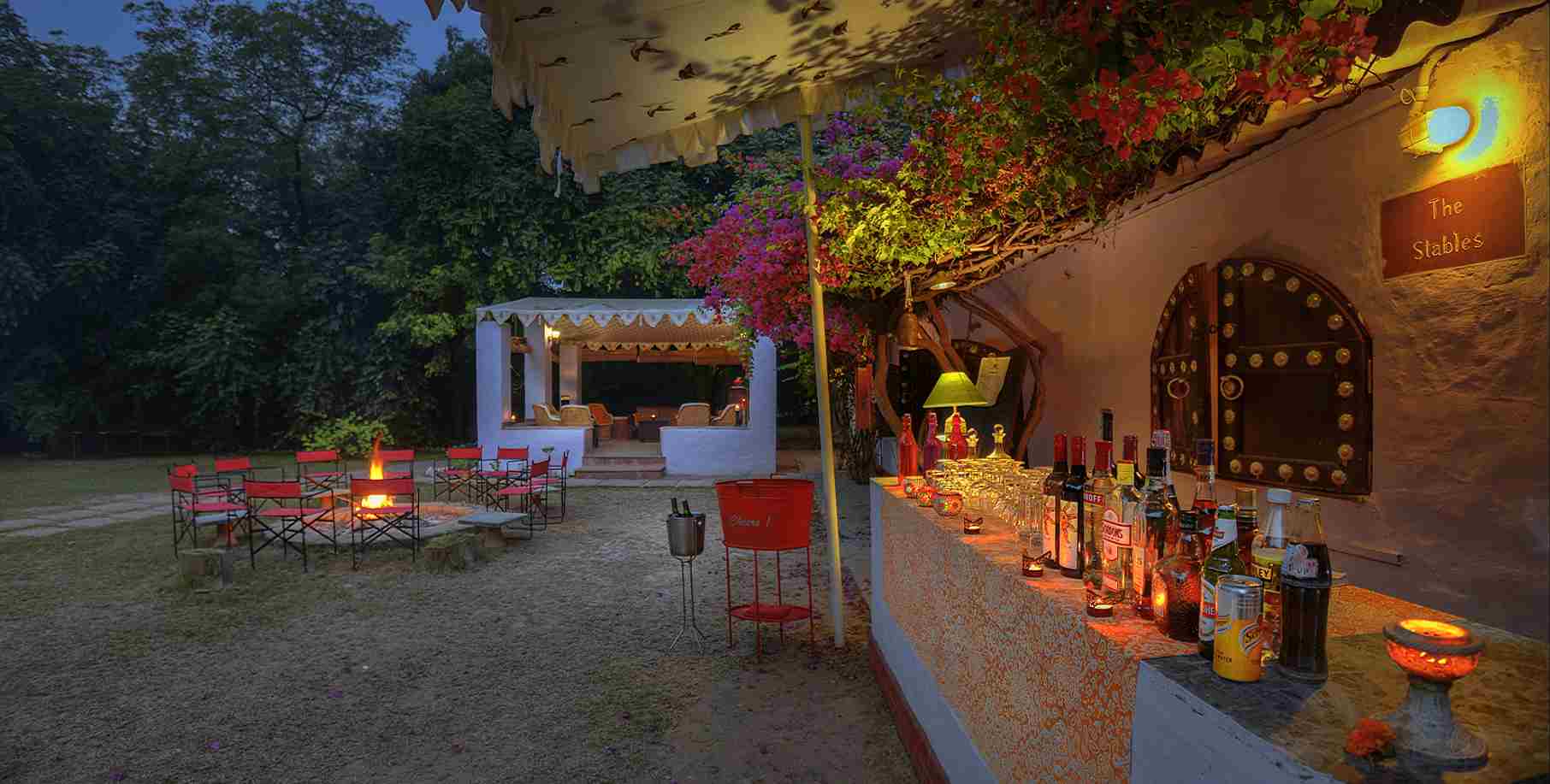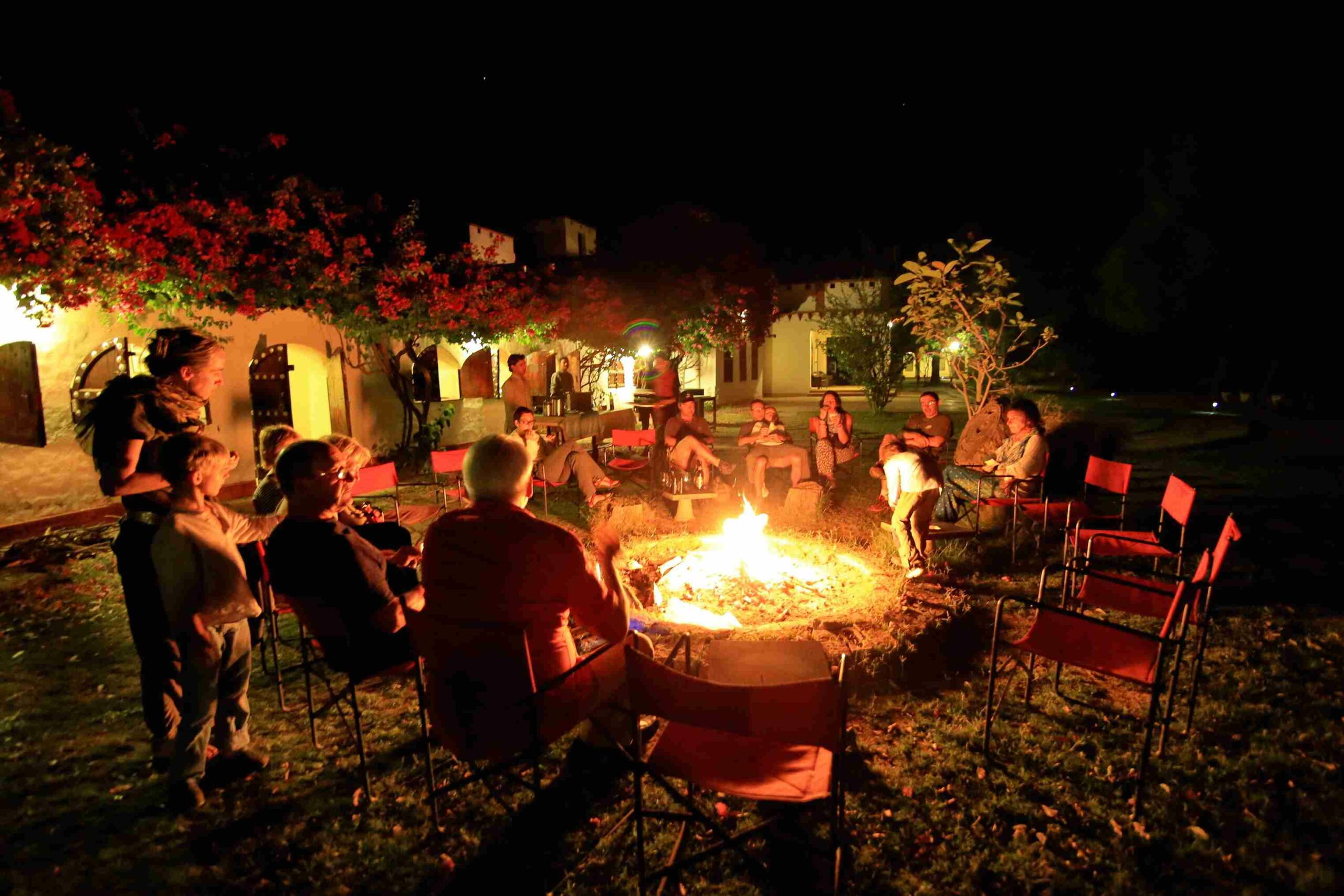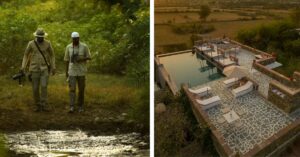Couple Turns Chambal Into a Tourism Hub With Their Boutique Safari Lodge, Empowers Locals
Anu Dillon Singh and her husband Ram Pratap Singh have transformed Chambal from being a spot that people stayed away from to a hotspot of tourism and culture. The couple started Kothi Mela, a boutique safari lodge, that kickstarted the transformation of the place.

“Ab hamein lagta hai hamari bhi koi value hai! (Now we feel like we too have something of value to offer to the world)” says Upendra Singh, a retired serviceman and one of the residents of Jarar village.
What he is referring to is the radical transformation that the Chambal Valley has borne witness to in the recent past. From being a land under threat due to illegal sand mining activities to becoming one that is now seeing a thriving local culture, Chambal’s fate is changing.
The National Chambal Sanctuary has been a critically important breeding ground for gharials, fish-eating crocodiles, and more than 320 species of migratory birds. But while this ‘Important Bird and Biodiversity Area’ received protection under the Wildlife Protection Act of 1972, its natural ecosystem has come under threat a number of times due to the issue of sand mining.
Not only does the activity cause riverbeds to become shallow and cause groundwater levels to deplete, but it also forces the rivers to change course, causing flooding. To counter this, the Ministry of Environment, Forests, and Climate Change (MoEFCC) issued ‘Sustainable Sand Mining Management Guidelines 2016’ with principles directed at managing the issue of sand mining and safeguarding local communities.

But the area continued to be one that people stayed away from, even as they visited the Taj Mahal, an hour’s drive from Chambal.
But in the year 2000, the scenario changed with an idea by a Delhi couple Anu Dillon Singh and Ram Pratap Singh. The boutique lodge they created here known as ‘Mela Kothi – The Chambal Safari Lodge’, has transformed Chambal into a place that people flock to, love, and see as an oasis of sustainability.
As Anu recounts to The Better India, “It was no easy feat. But the journey was more than worth it.” As Anu and her husband set out to re-envision the Chambal Lodge, which was her husband’s ancestral property, in 2000, the enormity of the task dawned on them. The reputation that the place had amassed over the years did nothing to help.
‘We wanted to show the locals the possibilities that existed’
The year was 1999. The couple was staring at a 200-acre property orchard built by Ram Pratap’s great-grandfather Rai Saheb Suraj Pal Singh in the 1890s, which housed a space that served as a camp office for the family’s bi-annual cattle fair.

“The space was used for around 15 days a year, so they were looking at cutting down the trees and converting the area into farmland,” explains Anu, adding that this was around the same time that she, an environmental science professional, and her husband, an electrical engineer, were expecting their first child.
Their life in Delhi was as good and lucrative as it could get, but the couple felt they wanted something more from life. “We wanted to raise our child in a different environment. Having seen that the farm needed a transformation, we saw this as a wonderful opportunity and decided to take it.”
That same year, the couple quit their corporate jobs and moved to Chambal, with the desire to turn things around. Their key aim was to make the valley a symbol of sustainability even though Anu points out that these concepts were not very prevalent in those days.
“When we gave up good paying jobs, we had a few thousand in the bank. Our families thought we were crazy to take this leap. Sometimes we thought so too. But it was the best decision,” she recalls.
As it has become evident now, the many changes the couple brought about in the land has been transformational. But they say they can’t take credit for any grand vision. “It was just something we decided to do and something that evolved organically. We followed through with our multi-pronged approach.”

“It began with us going to the grassroots levels,” notes Anu.
Thus began the process of pointing the locals in the right direction; getting them to realise that a symbiotic relationship with the environment was not a distant dream but rather something very possible. “But even while we were intent on creating this tourism model, the villagers were hesitant. They wondered why anyone would want to come to Chambal,” she adds.
This was when the couple thought of expanding their horizons, banking on Chambal’s main draw — birdwatching, to attract tourists to the area. Instead of reaching out to Indians, the couple began collaborating with tourism groups in England — whom Anu had interacted with during her further studies — that promoted birding tours. They were fascinated when they realised that some of these groups had more information about the Chambal Valley than themselves.
“When these groups would come to India, they would have day visits to Chambal for birdwatching and safari. Seeing these foreigners showing so much interest in the things in their backyard, the locals were starting to believe that their land did indeed hold promise. They were beginning to get convinced in the tourism model,” shares Anu.
The couple too were certain that they had been right about Chambal. Now that the locals were on their side, the next step was to design and construct the boutique property. The space would be one where tourists could recharge while they enjoyed the splendour of Chambal, gorge on the local delicacies, and unwind in this beautiful sanctuary.

Seeing Chambal from a different lens
The couple got started on the boutique property in 2000, staying in a village haveli while the cottages were being built. However, they soon took the call of moving into the “derelict” property, so they could oversee the construction firsthand.
Recounting the time, Anu says it taught her a lot; the most important of all being how to bend to the will of the land. “I remember we were living with our three-month-old baby in that property where there was no running water or electricity. While we slowly began revamping the space, it took time. But now that I look back, the journey turned out beautiful.”
Whilst focusing on the construction of the 14 cottages, they also paid attention to the surrounding orchards. Today, the land that started off with 54 trees blooms with more than 3,000, and Anu says its “positive life-giving vibe” is its main draw.
The 14 cottages are spread across 35 acres and are built with stone salvaged from the ruined structures. While seven of them can accommodate a couple, seven more can accommodate a young family. Anu says the cottages are designed in a way that they are flooded with natural light and cross ventilation.
Guests who come to Chambal are in for an immersive cultural experience with a host of activities that the couple has curated. Amongst the many activities they offer is the safari along the Chambal river — where guests can spot gharials, muggers, turtles, river dolphins as well as camels. Guests are given an opportunity to embrace the glory of the wetlands at the Sarus Crane Conservation Reserve where a large number of the sarus cranes breed.
Waking up to birdsong is one of the most beautiful experiences of staying at Chambal. Sightings of blackbuck deer and the Indian courser are frequent here.

While exploring the neighbourhood, guests can also spot the ruins of Ater Fort, which was once a valued stronghold and at the forefront of numerous battles between the Rajput, Maratha and British armies. The Bateshwar Temples are a beautiful highlight of the area with 40 temples dedicated to the glory of Shiva.
The locals are an integral part of the excursions and are proud of their town. The Holipura Heritage Walk is a wonderful way to showcase the glory of the village to these tourists. The havelis built here have a unique architectural blend and are a beautiful synthesis of myriad traditions.
It is also a chance for the tourists to witness the microcosm of rural Indian life with the symbiotic relationships of the inhabitants reflected in its layout. With its plethora of experiences, a place that had never been on the map was now the highlight of it.
With so much to look forward to, guests are in for a riot of fun at the lodge. But for Anu, the highlight is the time they spend with their guests. “Every evening we sit around the fire and have conversations. We ask questions and challenge each other. It’s always a two-way exchange,” she says.
The boutique property is open from October through April, and Anu says they have around 1,500 occupants within that time. As the couple looks back at the many memories they have created over these years at Chambal, they echo the same thought. “Take a leap of faith. It’s always worth it.” If you found our stories insightful, informative, or even just enjoyable, we invite you to consider making a voluntary payment to support the work we do at The Better India. Your contribution helps us continue producing quality content that educates, inspires, and drives positive change. Choose one of the payment options below for your contribution- By paying for the stories you value, you directly contribute to sustaining our efforts focused on making a difference in the world. Together, let’s ensure that impactful stories continue to be told and shared, enriching lives and communities alike. Thank you for your support. Here are some frequently asked questions you might find helpful to know why you are contributing?

Edited by Pranita Bhat
This story made me
-
97
-
121
-
89
-
167












